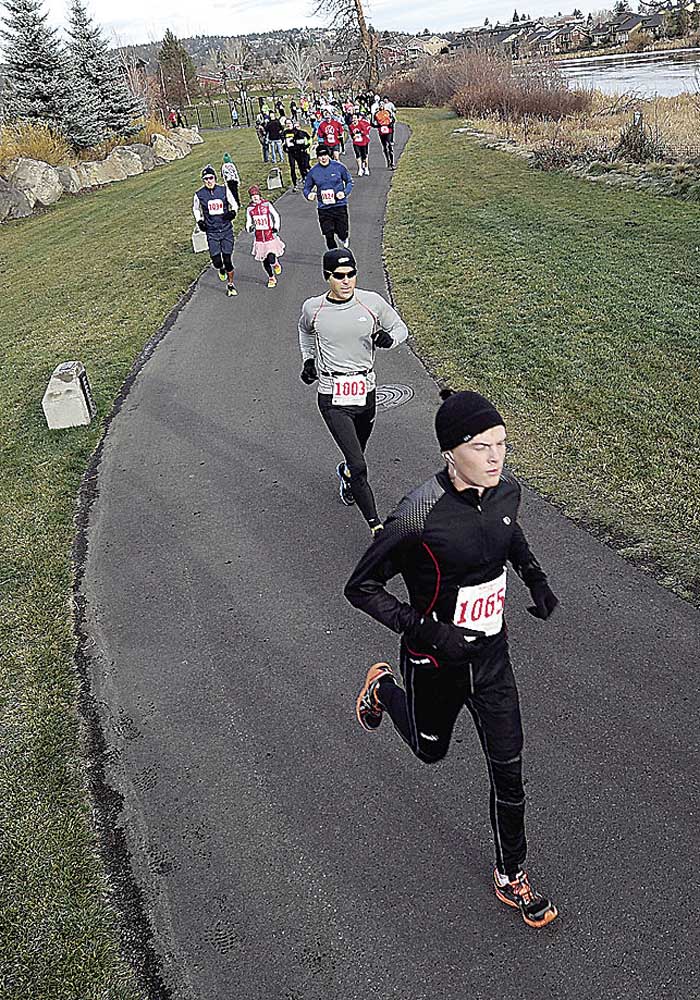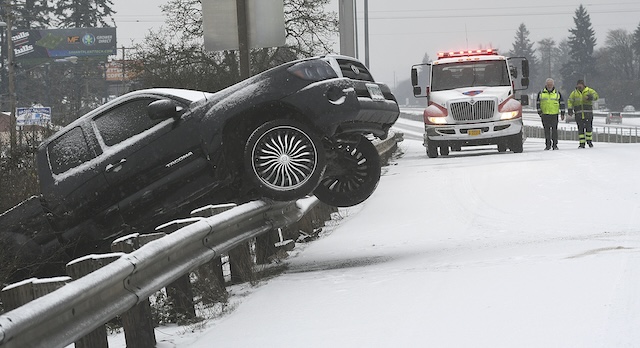How turkey trots became a Thanksgiving tradition
Published 12:00 am Thursday, November 22, 2018

- Runners participating in the 10K Boys & Girls Clubs of Central Oregon Turkey Trot in Bend at the Les Schwab Amphitheater in 2012. (Ryan Brennecke/Bulletin file photo)
In a matter of mere hours, you are likely to ingest a heaping plate of food: turkey, gravy and stuffing — need we go on?
Then, a bit later, you may well return for seconds.
You know this. So you set your alarm a few hours early, lace up your running shoes and pile into the family van for a brisk Thanksgiving Day 5K.
With each step, you feel a bit more guilt melt away. By the time you return home, shower and change into sweatpants, you feel almost entitled to nibble on your mother’s special snacks while parked on the couch for the Detroit Lions game before the big feast.
A happy Thanksgiving, indeed.
Yes, for many of us, taking part in a turkey trot has become as much a part of Thanksgiving as the hour of awkward conversation with our angry uncle. More than 1 million people are expected to finish a race related to the holiday this year, according to Running USA, the national trade association for the sport. There are about 1,000 races to choose from across the country, making Thanksgiving the most popular day of the year to run. (Sorry, Halloween.)
How did the nation’s day of gorging somehow evolve into its most active? Let’s start with a little history lesson.
From six to 14,000
As it turns out, runners began waking up for turkey trots decades before the green-bean casserole was even invented.
Organizers of the YMCA Turkey Trot in Buffalo, New York, say their 8K has been around since 1896, making it what they call the “oldest consecutively run footrace in North America.”
Then, as now, the race is about 5 miles. Unlike the inaugural trot, which drew only six competitors, today’s version of the Thanksgiving tradition attracts more than 14,000 runners.
“It’s an institution here,” said Geoffrey Falkner, a spokesman for the race, “and it seems to be the kind of thing that is growing across the county.”
They were onto something in Buffalo. The Boston Marathon began in 1897 — the next year; San Francisco’s Bay to Breakers started in 1912; and the concept of the turkey trot — usually a 5K — took off. In the early 20th century, those types of races popped up across the nation in places like New Orleans and Cincinnati.
Experts say that for decades, races — especially older ones — began because of what were essentially dares among a small group of men. One would bet, for instance, that the others could not run from the lake to the woods, and then the inaugural Lake to the Woods 10K would be born.
Nowadays, there are likely Thanksgiving Day races for people who like lakes, people who like the woods and everything in between: There are trots with a scenic view, trots for tech nerds, trots that reward finishers with apple pie. There is even a trot in Plymouth, Massachusetts (if you are feeling up for a pilgrimage).
Why have turkey trots become so popular?
Turkey trots have a lot going for them, said Rich Harshbarger, the chief executive of Running USA.
First, they are typically held on Thanksgiving — a fall day with decent weather the whole family is likely to have off work or school. A quick race provides a perfect way for families to spend (or kill) time together in those lazy hours before the big meal.
In more recent years, many turkey trots have also become connected to charity. To add an incentive to get out of bed, race participants often choose to raise money for a cause. Yes, organizers said, some people are at least partially motivated by the prospect of pre-emptively burning a few calories (more on that later).
As a result of all this, many of the today’s races have ballooned into annual city spectacles. Some of the races themselves are even precursors to parades or music festivals.
In Buffalo, Anne Reif, the principal organizer of the YMCA Turkey Trot there, said it had become one of the city’s “premier events.”
“Generations of family and friends come out and it’s a reunion of sorts,” Reif said. “It’s become the thing to do on Thanksgiving.”
Case in point: In places like Detroit and Dallas, tens of thousands of people gather to get a medal. The Dallas race — known as the Dallas YMCA Turkey Trot — is now more than 50 years old, and like many of the races, it encourages people to come in costume, which set the stage for a Guinness World Record in 2011: With 661 people in feathers and beaks, the race became the largest gathering of people dressed as turkeys.
Are turkey trots actually helpful to our health?
Do you want the plate-half-full or half-empty answer?
People generally burn about 100 calories per mile of running.
So say you run a 5K on Thanksgiving Day; that’s about 3 miles and 300 calories — the equivalent of a single slice of pumpkin pie.
Still, Harshbarger said, “Any activity is better than inactivity.”
As for the other 2,000 to 4,000 calories you are likely to consume — well, it’s never too early to start training for a marathon.








